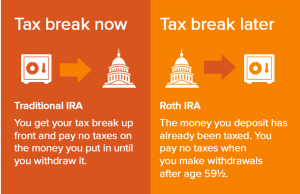
Secure Act 2.0 or Roth 2.0?
Financial PlanningFeb 23, 2023
The Secure Act was passed at the end of 2019 with the major changes pertaining to the required minimum distribution age and the way in which non-spousal IRA beneficiaries must withdraw the funds. Our blog was born in early 2020 and we didn’t write about it for two reasons. The first was that we were just getting started and had a lot of other things to write about, particularly with Covid 19 entering our lives at that time. The second was that we were concerned there wasn’t enough there to get a full article. Secure Act 2.0 was passed at the end of 2022 and our biggest concern is how to fit it all into one article. We’ll outline the parts that we deem most pertinent to our audience and encourage you to consult with us or your financial professional to determine how it impacts you.
We’ll start where the original Secure Act left off with the required minimum distribution age. The original Secure Act moved it to 72. Secure Act 2.0 increased the age to 73 with an increase to age 75 scheduled for the year 2033. If you turned 72 in 2022, you are still required to take your RMD by April 1, 2023 if you didn’t take it in 2022. You are also required to take your 2023 RMD by December 31, 2023. If you happen to be turning 72 this year and don’t need the money, you can defer it for one more year. If you turn 75 after the year 2033, you can plan for your RMD year to be age 75, but also keep an eye out for Secure Act 3.0 sometime between now and 2033.
Roth received a lot of attention. Below are the highlights:
529 Plan Rollovers to a Roth IRA– This one could be awesome at first glance as it alleviates the concern of only being able to use the fund for college. However, the devil is in the details. While it is a step in the right direction, the limitations need to be understood. The lifetime maximum rollover limit is $35,000 and the rollovers are subject to the annual Roth IRA contribution limits. On top of that, the 529 needs to be opened for at least 15 years and contributions made in the last 5 years are not eligible for rollover. As always, we recommend consulting a professional about your situation.
Optional Treatment of Employer Contributions as Roth – This also looks great, but the details need to be considered. These contributions would be treated as taxable income to the employee, which could create a surprise at tax time.
Catch-up Contributions may be Required to be Roth – Effective January 1, 2024, employees who made $145,000 or more (indexed for inflation) in the prior year will only be allowed to make catch-up contributions as Roth contributions. This takes away the immediate tax benefit of a pre-tax contribution and creates a larger tax bill for the high earners. Also, effective in calendar year 2025, there is a pop-up increase in the catch-up contribution for participants ages 60-63. For participants in that age range, the limit will be the greater of $10,000 or 150% of the prior year catch-up amount.
They also removed the RMD requirement for Roth 401(k) plans and allowed for Roth contributions to Simple and SEP IRA plans. We are still awaiting IRS guidance on the Simple and SEP IRA plans.
Another item that attracted attention is student loan matching. Employers are allowed to match employee student loan payments as either pre-tax or Roth contributions to their retirement accounts. There were also provisions that impacted withdrawals including an emergency savings option. Finally, there were additional tax credits to incentivize employers to start a retirement plan and in 2025, startup plans will be required to automatically enroll employees in the plan. The employees will have the option to opt out.
This was a sweeping legislation and there is still a lot to learn. The industry service providers, particularly the recordkeepers, are still looking for guidance on a lot of these issues. While the changes may affect some more than others, it is worth the time evaluate whether they create any opportunities for your financial situation.
Citations:
5 Big Changes to Roth Accounts in Secure 2.0, Forbes, Jan. 5, 2023
Secure 2.0 Has Been Enacted, Transamerica Corporation, 1/23


